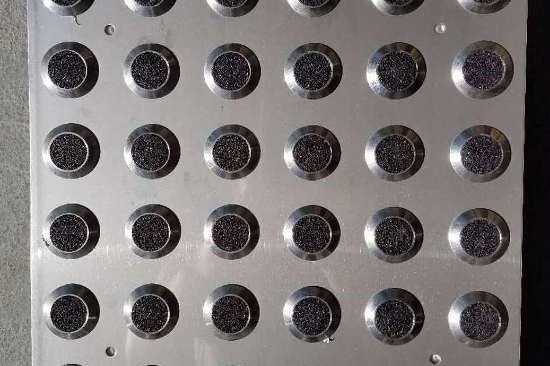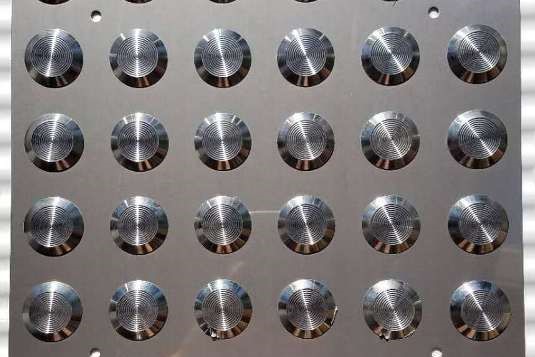Installation Methods
Make sure you remove any debris & dust and make sure the surface is completely dry.
IMPORTANT: Please use the Surface Primer supplied. It is advisable to keep the pads warm as this will assist in achieving an instant bond. The warmer they are the better the adhesion will be.
- Place the Tactile pads into position leaving a 1-2mm gap for expansion.
- Apply masking tape as close as possible to around the edges of the pads
- Remove pads and apply the Surface Primer onto the surface and up to the edge of the masking tape allowing the primer to soak in.
- Leave primer to dry between 15 – 30 minutes pending on conditions.
- Remove backing paper from the tactile pad and place into position leaving a 1-2mm gap. Tap down firmly with rubber hammer.
- Once the area is completed remove the masking tape
Compliance
Allway’s self-Stick Tactiles comply with the following standards:
- National Construction Code
- Australian/New Zealand Standard 1428.1 2009 – Design for access and mobility – Design for access and mobility: General requirements for access – New building works
- Australian/New Zealand Standard 1428.4.1 2009 – Design for access and mobility – Means to assist the orientation of people with vision impairment: Tactile ground surface indicators
- Australian/New Zealand Standard 4586 – 2013 – Slip resistance classification of new pedestrian surface materials
Luminance Contrast
The Building Code of Australian/New Zealand and the AS/NZS 1428.4.1 require a minimum luminance contrast of 30%. Guide lines are as follows:
- Integrated tactile indicators – not less than 30% across the entire area
- Discrete (individual) tactile indicators – not less than 45%
- Where Discrete tactile indicators are constructed of two colours or materials the raised section shall have a minimum contrast of 60%
Test – AS.NZS 1428.4.1 2009 Appendix E (pg 70-77)


 Features
Features Specification
Specification